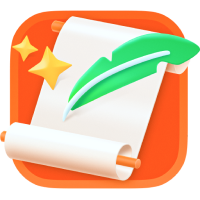Can Class Companion Detect AI-Generated Text?
With the rise of generative AI tools like ChatGPT, educators are increasingly concerned about academic integrity. Class Companion, an AI-powered educational assistant, claims to detect instances of AI-generated content in student submissions. But how accurate is it?
While Class Companion uses behavioral and contextual clues to identify suspicious activity, it doesn't directly "read the mind" of a language model. It analyzes patterns associated with unnatural writing processes. In this article, we'll explore what Class Companion can detect.
Can Class Companion Detect AI-Generated Text?

Class Companion, is designed to offer instant feedback, personalized tutoring, and assignment grading for teachers and students. While it excels at generating practice questions and providing constructive feedback, its ability to detect AI-generated text, such as content from ChatGPT, is not its primary focus.
According to the Class Companion Help Center, the platform includes basic tools to identify potential AI use by analyzing text patterns and user behavior, such as pasting large text blocks or submitting responses unusually quickly. However, it lacks a dedicated AI detection engine comparable to Turnitin or GPTZero .
Tips:
Worried that your text might be falsely flagged by an AI detector? Try using Tenorshare AI Bypass , a helpful tool that transforms AI-generated content into more natural, human-like writing to reduce the risk of detection.
What Can Class Companion Detect?
Class Companion uses multiple behavioral indicators and system logs to detect potential use of AI-generated content. While basic detection methods such as copy and paste monitoring are available to all users, advanced features like typing time, tab switching, and response similarity analysis are part of the premium version.
1. Copy and Paste
One of the first red flags is when a student pastes large blocks of text into the answer field. Class Companion can detect when text is pasted using keyboard shortcuts or the mouse, instead of being typed manually. This may suggest the content was copied from an AI tool or an online source.
However, students will not be flagged for pasting if they:
-
Copy their own previous answers
-
Copy the question prompt
-
Copy the source text provided for the question
This helps Class Companion focus on suspicious activity without flagging normal academic behavior.
2. Typing Time
Class Companion records typing speed and cadence. Human typing usually includes pauses, errors, and editing. AI-generated responses, when pasted or typed unnaturally fast, often deviate from normal patterns. If a student submits a complex answer with minimal typing time, the system flags it as suspicious.
3. Tab Switching
Frequent switching between tabs during an exam or writing task can be another indicator. Class Companion tracks whether students are toggling away from the interface, potentially to use an AI chatbot or a search engine. A high frequency of tab switches within a short period can trigger alerts.
4. Response Similarity
If multiple students submit nearly identical answers, especially in open-ended tasks, Class Companion compares the content for response similarity. This feature is useful in detecting AI-generated content shared among students or repeatedly used prompts from AI tools.
How Do I Humanize AI Content?
For students who use AI tools like ChatGPT responsibly, such as for brainstorming or drafting, there is still a risk that their work may be flagged as AI-generated by detection systems, even after careful editing. To reduce this risk, humanizing tools can help convert AI-generated text into more natural and undetectable content.
Tenorshare AI Bypass is a reliable solution. It uses advanced natural language processing (NLP) to transform text produced by AI tools like ChatGPT into human-like writing. By removing identifiable patterns often associated with AI-generated content, it helps users avoid detection by systems such as Turnitin, GPTZero, and others.

Final Thoughts
Class Companion is a valuable tool for providing instant feedback and tutoring, but its ability to detect AI-generated text, such as from ChatGPT, relies on indirect indicators like copy-and-paste detection, typing time analysis, tab-switching monitoring, and response similarity checks. These features are useful but not specifically designed to catch sophisticated AI outputs, which often appear unique and human-like. False positives and negatives remain challenges, and instructors must combine AI tools with manual review for accurate assessments.
For students or writers who want to ensure their AI-assisted content remains natural and undetectable, Tenorshare AI Bypass offers a practical solution by transforming AI text into human content .

Tenorshare AI Bypass
- Create 100% undetectable human-like content
- Bypass all AI detector tools like GPTZero, ZeroGPT, Copyleaks, etc.
- Original content, free of plagiarism and grammatical errors
- One-click AI bypass with a clean and easy-to-use interface
You Might Also Like
- Does Canvas Discussion Check for AI in Student Posts?
- Can You Get Caught Using ChatGPT on Gradescope?
- Can Canvas Detect Screenshots on Quizzes?
- Can Canvas Detect Copy and Paste? Everything You Should Know
- How to Use Turnitin With or Without Class ID: Students and Teacher Guide
- Do UCs Use AI Detectors for Student Submissions?
- Does Brightspace Detect AI Content Like ChatGPT?
